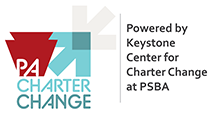NSBA Report: The Impact of Charter Schools on Student Achievement, Funding and Integration
National School Boards Association – Center for Public Education, 2021
Since the first charter school law passed in Minnesota in 1991, over 40 states and the District of Columbia have passed laws allowing the publicly funded, privately managed, and semiautonomous schools of choice. According to the latest available statistics from the U.S. Department of Education, “between fall 2000 and fall 2016, overall public charter school enrollment increased from 0.4 million to 3.0 million. During this period, the percentage of public school students who attended charter schools increased from 1 to 6 percent.”
Ever since the first charter school opened in Minnesota in 1992, the battle for fair funding has raged across the land. On the one hand, advocates of charters — independently run, nonprofit public schools — use research and other evidence to show how charters significantly boost the achievement of students, particularly poor and minority youngsters residing in urban communities, and increase their odds of success in college and beyond. On the other, they have pressed hard to eliminate the massive disparities in the funding that charter students receive when compared with their district-operated peers serving similar children.
Click here to access the full report.
